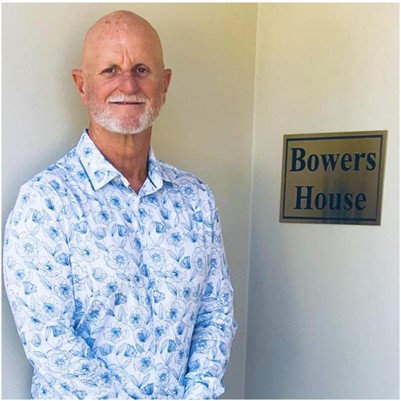
Des Houghton // Saturday Insight – 12 November 2022
Karen Caddis was on top of the world preparing for her wedding to handsome Redbank Plains bus driver Russell Conyard when disaster struck.
“He proposed to me, and I said yes. Not long after, things changed forever,” she said.
Mr Conyard, 62, suffered a devastating stroke.
“He was so glad it happened when he wasn’t driving the bus.”
Canadian-born Mr Conyard had begun the long road to recovery when disaster struck again. In 2020 he suffered a second stroke that cut him down so mercilessly he can no longer feed himself, dress or bathe himself and cannot go to the toilet unaided. He has some movement in one arm and some fingers and one leg but is one of a growing number of Australians who find themselves, as Ms Caddis says, in a living hell.
I visited them at Mr Conyard’s new home in Brassall, not far off the Warrego Highway at Ipswich. From the outside it looks like any neat brick family home you will find in the ‘burbs. Inside it has wide, wide hallways and low benches and other features that make it extremely accessible for people with extreme functional impairment.
Ms Caddis and her daughter assist in Mr Conyard’s care. The NDIS has just delivered a $35,000 motorised wheelchair that looks more like a sophisticated golf buggy. The toilet and bathroom have a large mechanical hoist. The roof and ceilings of the home were strengthened with extra bracing for hoists, said David Beard, whose firm SDA Smart Homes provides specialist disability accommodation. Even the walls were reinforced, Mr Beard said.
Mr Beard also runs the Disability Housing Centre and is working with two universities and a robotics expert to provide more tech-savvy solutions to assist the profoundly disabled and their carers.
Next week Mr Conyard will be the first person in Australia to trial a new hi-tech push button bar he can use to call for emergency help, or ask for a snack, a drink or a cigarette or toilet break.
Mr Beard, 62, is pioneering other technology he hopes will improve the lives of people with disabilities. An old boy of Wynnum North State High School, the former mine worker switched to property when he returned home to Brisbane at the age of 24 to get married.
“We didn’t plan to be a NDIS housing provider,” he said. “We were busy doing our own projects when we were asked to come up with more innovative designs for housing for the disabled. “We then became a housing provider. It took us a year to get compliance. “We had to learn along the way. It was a bit like diving off a cliff and building a parachute on the way down. “Now we have built 55 high-care homes in South East Queensland at Ipswich, Loganholme, Birkdale, Ellen Grove and Boondall.”
The NDIS says there are 30,000 Australians still desperately in need of high-care accommodation. Mr Beard believes the disabled should be integrated into local communities. He was disappointed when some developers planning new estates rejected his offers to build special homes. The developers feared the stigma of having disabled people living in the same suburb would detract buyers.
Emma Hocking, the chief executive of SDA Smart Homes, has plans for dozens more SDA housing in Queensland and wants to extend the company’s reach to regions where the demand is greatest. She is seeking investors.
Mr Beard points out that 554,971 Australians are now receiving support from the NDIS, according to its latest quarterly report. The figure jumped 23,137 in three months. Mr Beard said the current housing and rental crisis had hit the disabled hard.
To the nation’s shame, there are still 3435 young disabled Australians trapped in aged care homes because there is nowhere suitable for them to live.


